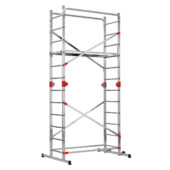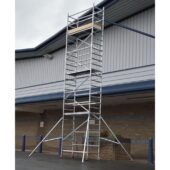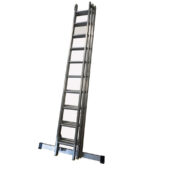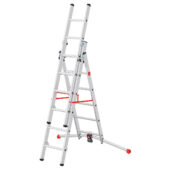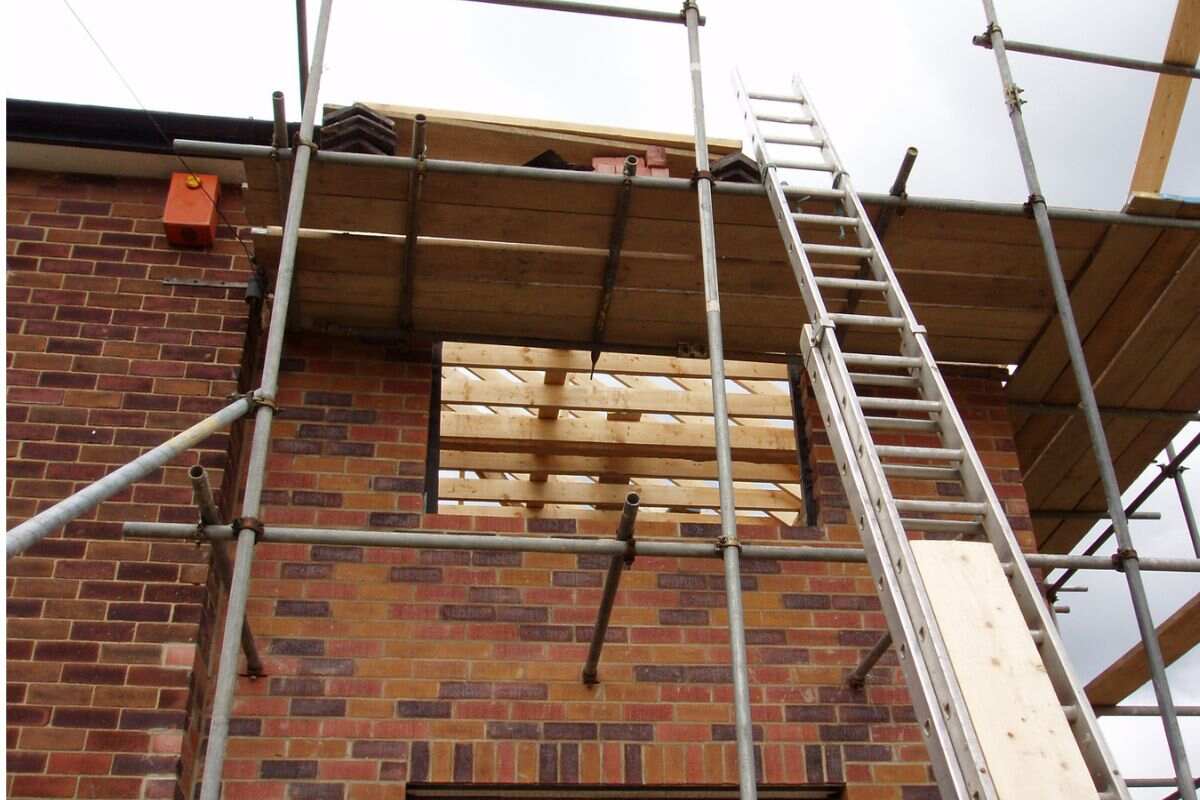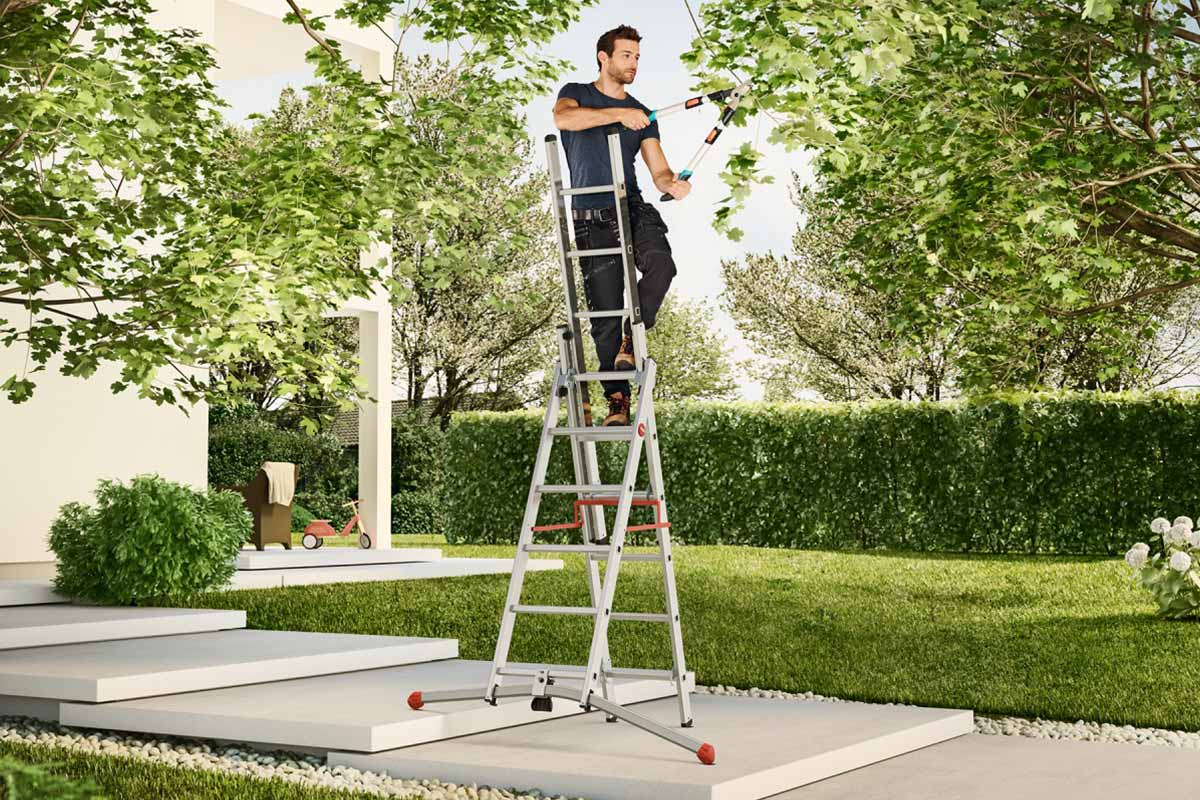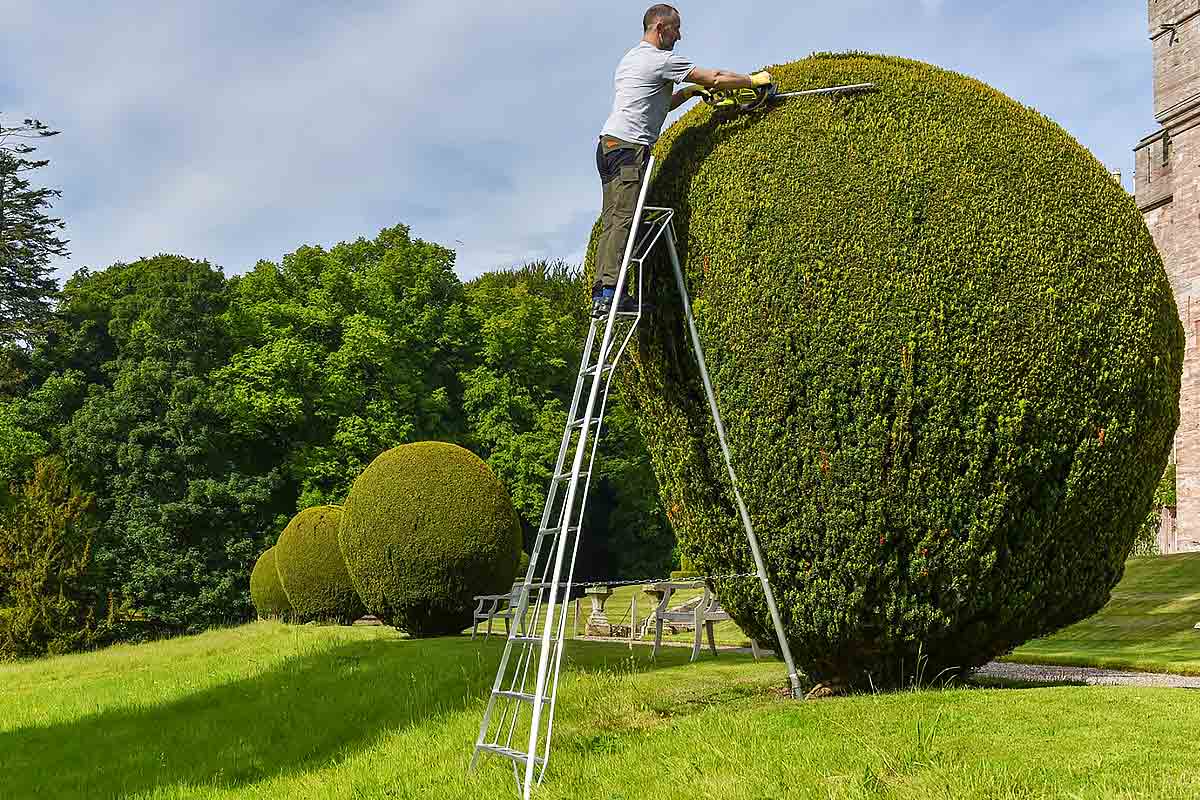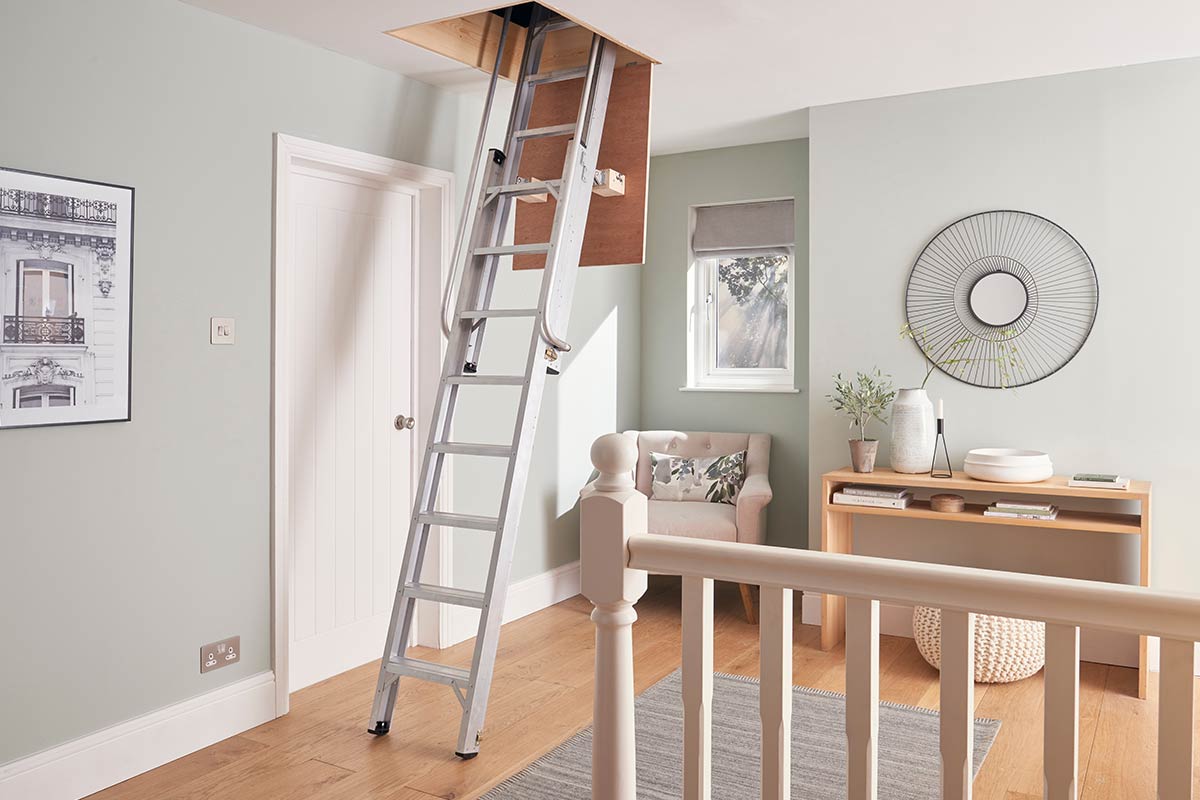Ladders vs. Scaffold Towers – Which One Is Right for You?
July 18, 2024 | Nate Cord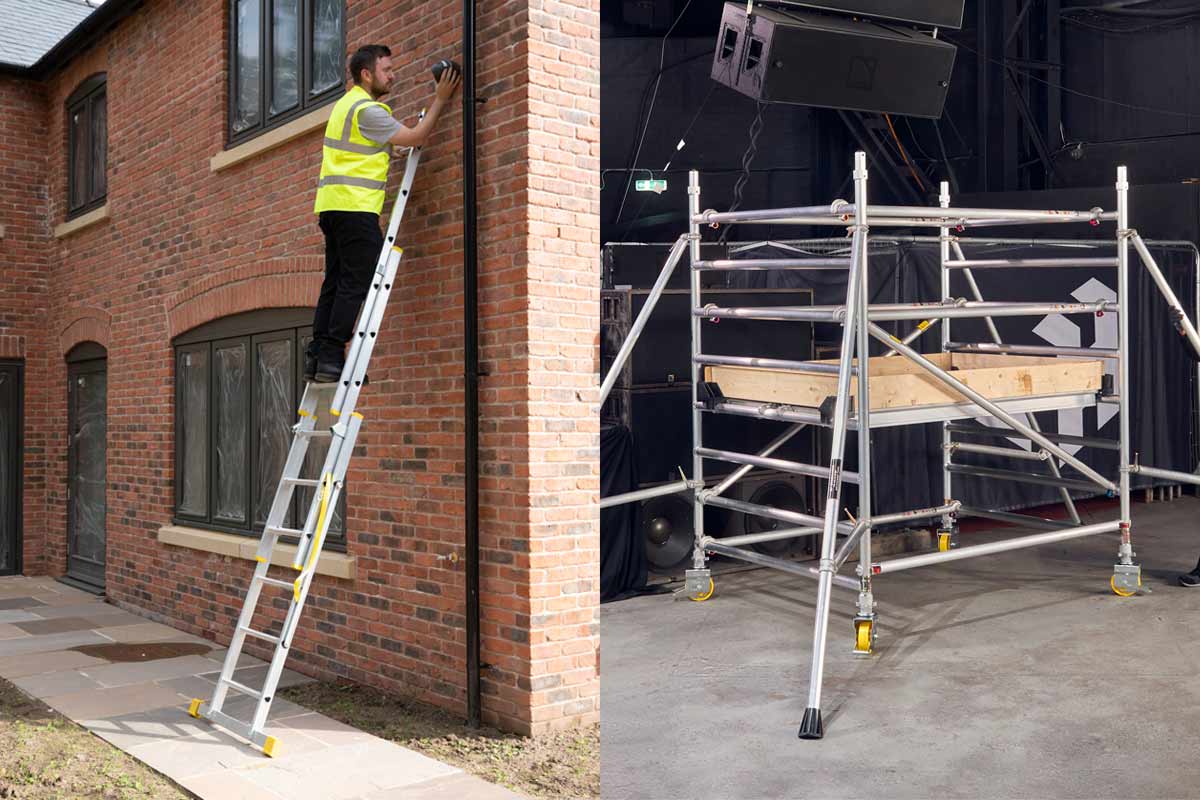
When working at height, choosing the right equipment is essential for the protection of you or your workers, and the effectiveness of your job. Ladders are one of the most convenient options for working at height, but a ladder isn’t right for all jobs. In some cases, a scaffold tower will be more appropriate. In this guide, we will help you determine which one is right for you by comparing their features, advantages, limitations, and recommended uses.
When Should I Use a Ladder?
Ladders are best suited for low-risk, short-duration tasks at height. As a general guide, if your task requires staying up a leaning ladder or stepladder for more than 30 minutes at a time, it is recommended that you use alternative equipment. In addition, you should only use ladders in situations where the ladder will be level, stable and secured.
Be aware that ladders should only be used by competent individuals who can assess the risks of using a ladder for a particular task, understand when it is appropriate to use a ladder (and when it is not), and which type of ladder to use and how to use it.
Choosing the Right Type of Ladder
It is important that you choose the right type of ladder for your job to prevent falls and injuries and be in compliance with safety regulations. The right ladder will also be able to meet your task-specific needs, such as getting you to the right height. The main types of ladders are:
- Step Ladders: Self-supporting, portable ladder with steps on one side and a support frame on the other. Most suitable for low to medium-height tasks.
- Extension Ladders: Extension ladders require support against a stable wall or surface, but can be extended to reach higher places than a step ladder.
- Roof Ladders: These can be extended even higher up (up to 10 metres), and have hooks that secure the ladder to the ridge of a roof.
- Telescopic Ladder: Collapsible, extendable ladder that can be adjusted to various heights, but slots inside itself when it’s not extended for easy transportation and storage.
- Combination Ladders: Several different sections which can be configured into various positions, including a step ladder or extension.
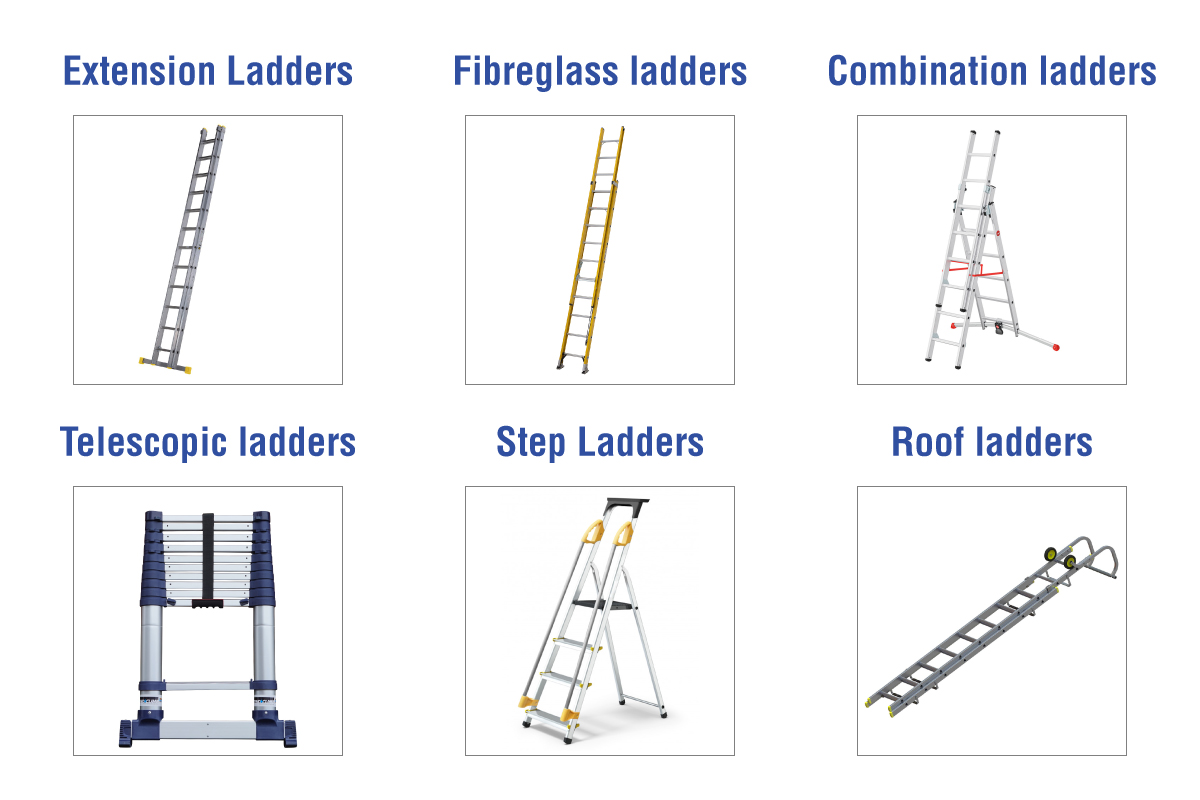
Need more guidance on which ladder is right for the job? Read our Ladder Buying Guide.
Advantages of Ladders
- Available in various sizes and configurations, allowing workers to reach different heights without the need for intricate adjustments.
- Minimal training required for safe use, making them accessible for a wide range of professions.
- Lightweight and easy to transport.
- Quick to set up for easy and instant access.
- Quick to take down after the job is complete.
- Generally cheaper than scaffold towers.
Limitations of Ladders
- Restricted working area, which makes working on larger surfaces much more difficult.
- Not suitable for complex tasks that require movement or access to various points.
- Limited space to carry tools and materials.
- Less stable compared to scaffold towers, especially at greater heights, with higher risk of slips and falls.
- Prolonged use of ladders can cause fatigue and discomfort in the back and legs due to standing on narrow rungs.
Ideal Uses for Ladders
The most ideal uses for ladders are low-risk, short-duration jobs, such as:
- Painting walls or ceilings.
- Changing light bulbs.
- Cleaning windows.
- Assessing roofs.
- Minor repairs and installations.
- Gaining access to out-of-reach shelf and storage spaces.
- Carrying out general inspections.
Read the full guidance on using ladders on the Health & Safety Executive website.
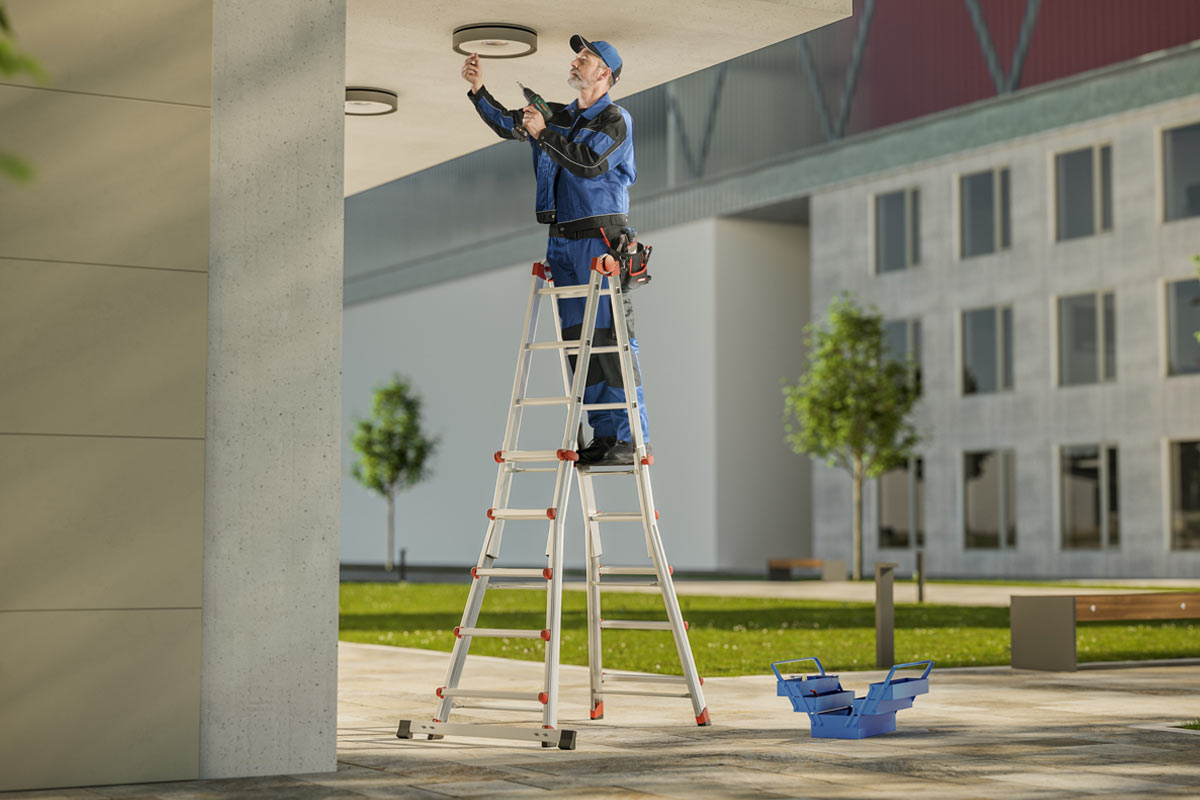
When Should I Use a Scaffold Tower?
A scaffold tower is best suited for higher-risk, longer-duration jobs at height, as there is more protection against a fall. As a general guide, if you need to work at height for more than 30 minutes, need to reach a large area of wall or a surface that is over 9m high, need greater freedom of movement while working at height, or if you’re unable to secure your ladder, a scaffold tower should be used instead of a ladder.
However, as per the Health & Safety Executive, using a scaffold tower requires you to follow strict guidelines, including:
- The type of tower selected must be suitable for the work and erected and dismantled by people who have been trained and are competent to do so.
- Those using tower scaffolds should also be trained in the potential dangers and precautions.
- Towers should be erected following a safe method of work, either using an advance guard rail system or a through-the-trap position.
- The tower must rest on firm, level ground with the locked castors or base plates properly supported, stabilisers or outriggers should be installed when required, and the tower should never exceed the recommended height.
- Tower scaffolds must comply with the standard required for all types of scaffolds, e.g. double guardrails, toeboards, bracing and access ladder.
- You should never use a tower in strong winds, as a support for ladders, trestles or other equipment, with broken or missing parts, or with incompatible components.
In short, scaffold towers should only be erected and used by trained and competent individuals. Read the full guidance on tower scaffolds on the Health & Safety Executive website.
Scaffold Tower Types
Similar to ladders, the type and size of your scaffold tower depends on the job at hand. The main types of towers are as follows:
- Standard Scaffold Towers: Fixed in place, offering stability at height for prolonged tasks. Available in single width for areas with limited space or narrow access points, or double width for larger areas and outdoor use.
- Mobile Scaffold Towers: Equipped with wheels for easy movement around the site. Most suited for tasks requiring frequent relocation.
- Stairway Scaffold Towers: Built-in stairs for easy and safe access to different levels. Commonly used on sites where frequent up and down movement is required.
- Cantilever Scaffold Towers: Features an extended platform for reaching over obstacles, such as stairwells, garages and porches.
- DIY Scaffold Towers: Lighter and simpler in design than other towers. Most suited for home use and DIY projects.
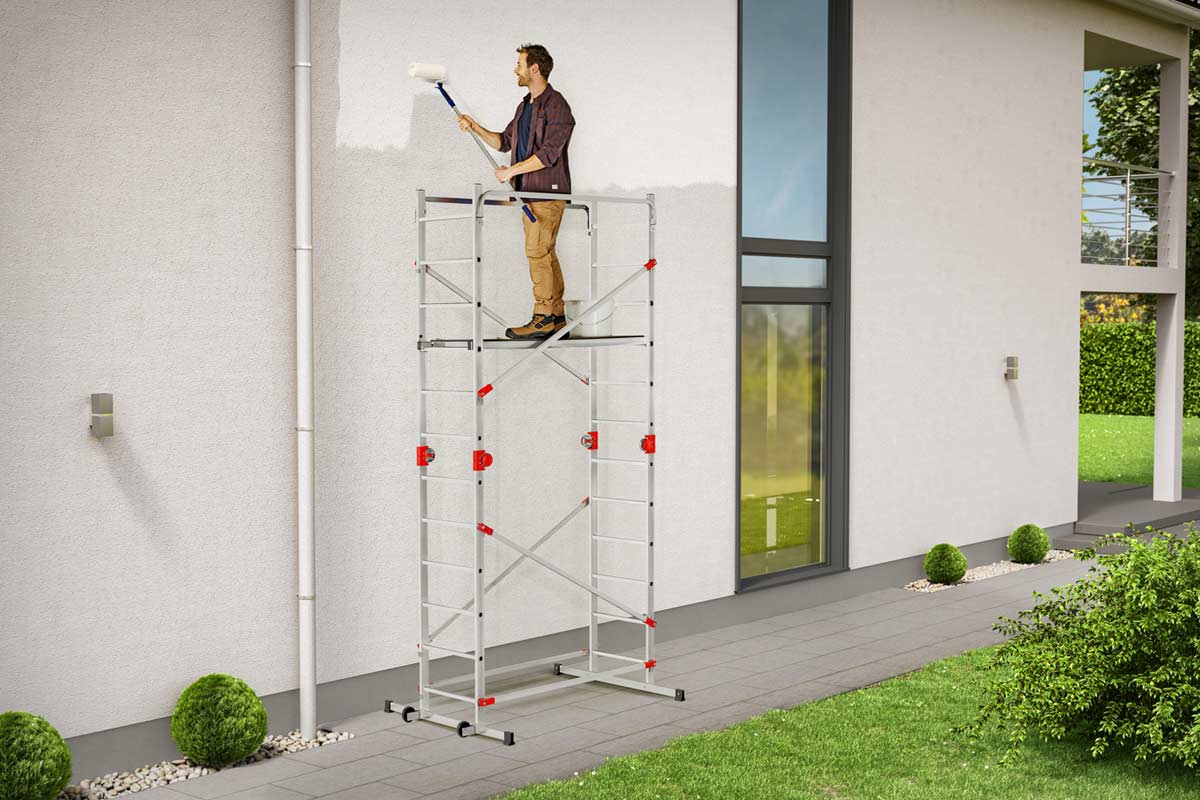
Advantages of Scaffold Towers
- Wide base and solid construction make them more stable than ladders.
- Guardrails and larger platforms reduce the risk of falls.
- There is more space for tools, materials, and movement.
- Can be adjusted to the required height, making them versatile for a range of tasks.
- More stable and reduces the risk of slips, due to their free-standing structure.
Limitations of Scaffold Towers
- Requires professional knowledge, training and experience to assemble and dismantle.
- More time-consuming to assemble and dismantle.
- Bulkier and heavier, making them harder to transport.
- Generally more expensive than ladders.
- Requires more storage space when not in use.
Ideal Uses for Scaffold Towers
The most ideal uses for scaffold towers are higher-risk, longer-length jobs, such as:
- Large-scale painting and decorating projects.
- Construction and maintenance work.
- Installing lighting or ceiling fixtures.
- Tasks requiring extended periods of work at height.
- Tasks that require more than one worker at once.
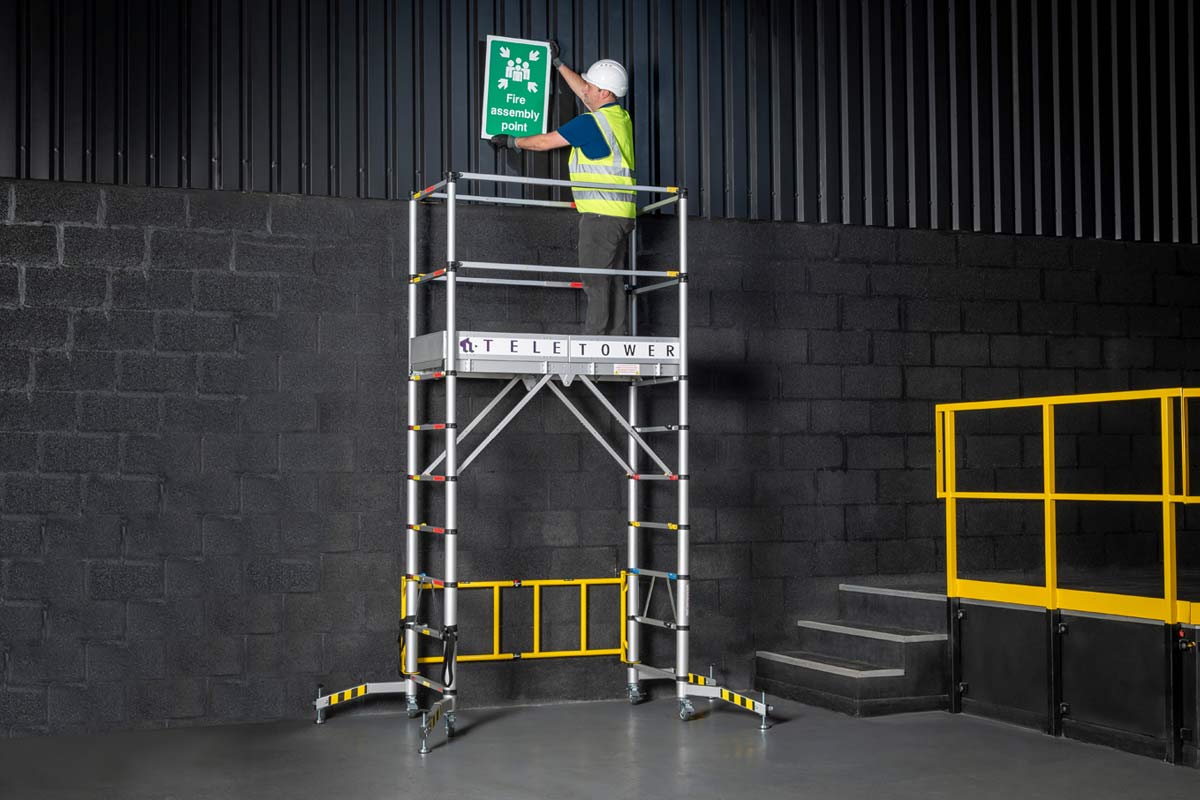
Can You Put a Ladder on a Scaffold Tower?
No, putting a ladder on a scaffold is unsafe. Ladders are designed to be placed on solid ground, so should not be put on a work platform. As well as the surface being uneven and potentially too narrow, you risk falling from a much greater height if the ladder slips.
Instead of using a ladder, workers should rely on the scaffold’s built-in access solutions, such as internal ladders or stairs, which are designed to be safe and stable. If additional height is necessary, it is recommended that you extend the height of the scaffold tower itself.
Conclusion
Deciding whether a ladder or scaffold tower is best for your job can be a difficult task, but with the information provided in this guide, you’re well-equipped to make an informed decision.
To recap, you should use a ladder if:
- You need to work at height for less than 30 minutes.
- The job is relatively low-risk.
- You don’t need more space than what the ladder provides, as the range of motion is much more limited on a ladder.
- You are working alone, or don’t need someone up there with you.
But you should use a scaffold tower if:
- You need to work at height for more than 30 minutes.
- The job is medium to high-risk.
- You need some extra space for your tools or to move around.
- You need to use both hands.
- You need another person up there with you.
- You’re working on several different spots and don’t want to keep repositioning your ladder.
Looking for a reliable ladder, scaffold tower or other premium access equipment? At Ladders4Sale, we offer a range of ladders, platforms, steps, towers and accessories for all trade and do-it-yourself jobs at unbeatable low prices. Better yet, all of our products come with lifetime support – after your initial purchase, we continue to provide ongoing support and assistance for free. In addition to this, all orders come with free shipping to mainland UK.
If you require additional advice or have a question for our team, don’t hesitate to get in contact with us using this form or via phone at 01639 849847.
Be the first to know the latest industry news and offers
